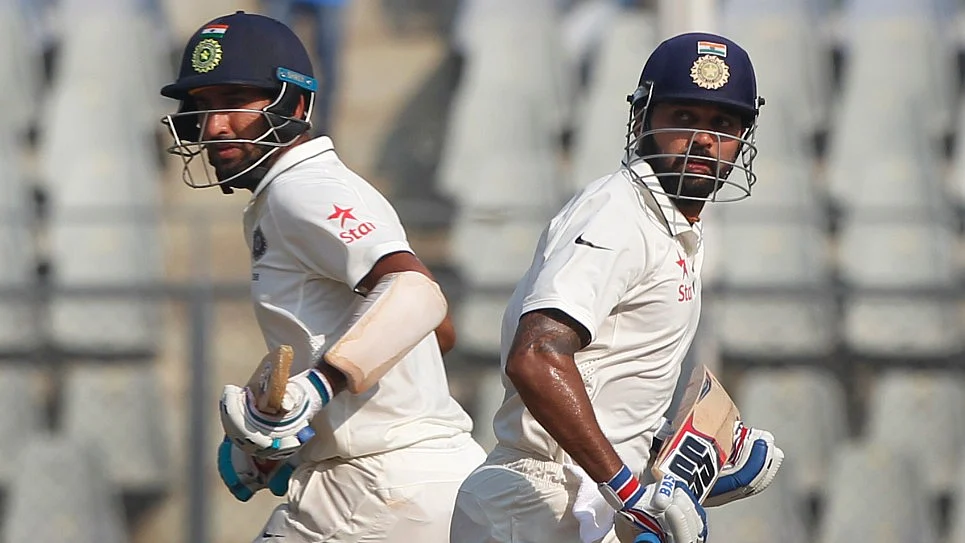In Stats: India’s Replies to 400 Plus Scores & Vijay-Pujara Stands
Take a look at day two of the fourth Test between India and England through numbers.

advertisement
At stumps on the opening day, the Mumbai Test match was interestingly poised with England possibly holding a slight edge over India. After opting to bat first, England at 196 for 2 were in a position of strength at the tea interval.
But by picking up three quick wickets in the final session, India clawed their way back into the match and ensured there was little to separate the two teams at the end of day’s play.
On a surface which started playing a few tricks right at the fag end of the opening day’s play, the England camp would have hoped their lower order could muster another 100 runs and help the team get to 400 runs on the board. That is exactly how things panned out on day two as the England lower order – with Jos Buttler (76) taking the lead – added 112 runs.
Though the tourists lost Ben Stokes very early on Friday, they found an unlikely contributor in Jake Ball, who alone consumed 10 overs and added 54 runs in the company of Buttler, who also went on to score his first half-century after 14 Test innings.
Historically, in the 24 Tests played at the Wankhede Stadium, no team has ever ended up on the losing side after scoring more than 347 runs batting first. The England camp must have believed, with a total of 400, they had enough runs on the board.
Though many believe that posting 400 runs on the board gives teams a psychological edge and can put pressure on the other side, the England camp ought to be aware that the pitch at the Wankhede Stadium isn’t a minefield and runs can be scored with application.
England also must be aware of the ‘never-give-up’ attitude of this Virat Kohli-led Indian team. They experienced India’s never give up attitude in the Rajkot Test, when despite England scoring 537, they had to settle for a draw.
Later in the day, when the home side came out to bat, India sent out just that kind of message to the visitors – that they were up for a fight. The openers got the team off to a steady start adding 39 runs without being troubled too much, before one flamboyant stroke caused the dismissal of KL Rahul.
The opening batsman from Karnataka needs to understand that his job, after having seen off the most challenging period with the new ball, is to convert starts to big scores. He has failed to deliver this expectation in his last few outings.
Since his century in Jamaica earlier this year, Rahul has featured in five Test matches, has batted in seven innings, and been dismissed after getting a start in five of those seven innings.
The 24-year old has what it takes to play the big innings – and he has done it on several occasions in the past. He perhaps needs someone to sit him down and make him realise that he is in the Indian team because of his habit of piling on the big runs.
Post Rahul’s dismissal – bowled through the gate after attempting to drive Moeen Ali through cover – India consolidated through Murali Vijay and Cheteshwar Pujara, who stitched together in excess of 100 runs and took the team through to stumps at 146-1.
India still trail England by 254 runs and will need Pujara and Vijay to stretch their association further. It might be a long shot and might read silly too, but if India can bat long and post a huge first innings total, there’s a chance that they can put England under pressure when they come out to bat in the second innings.